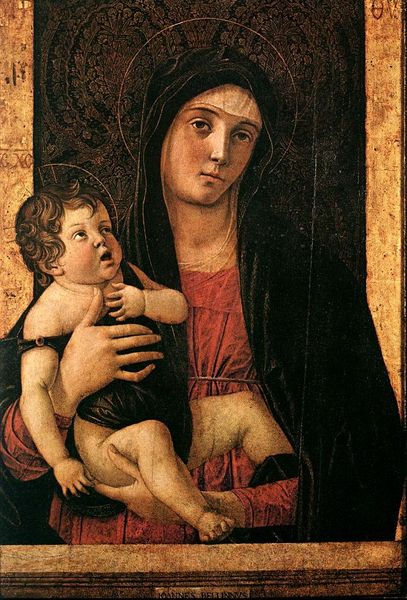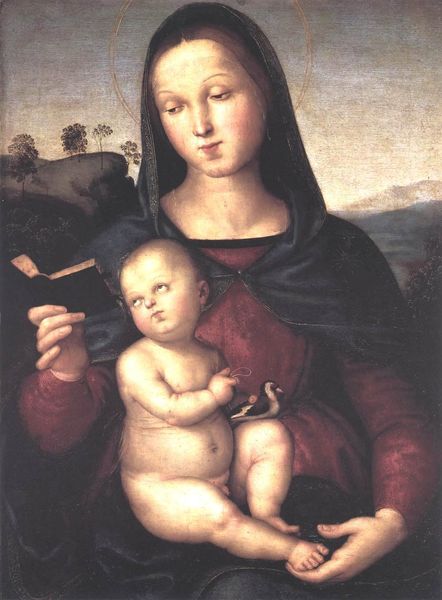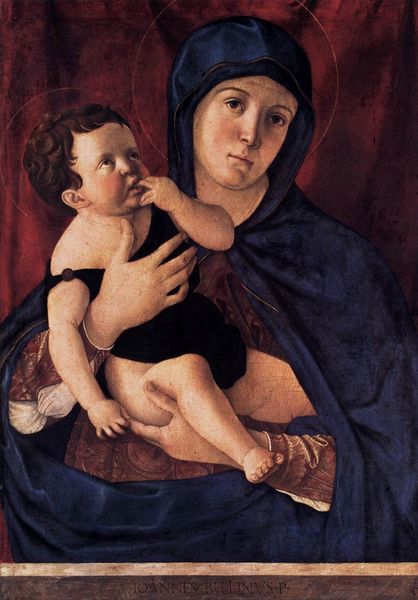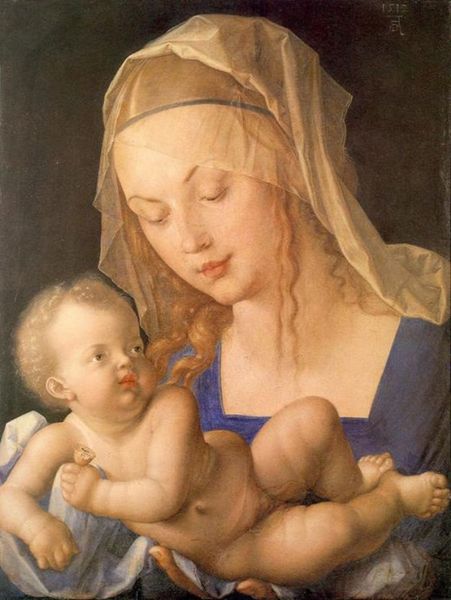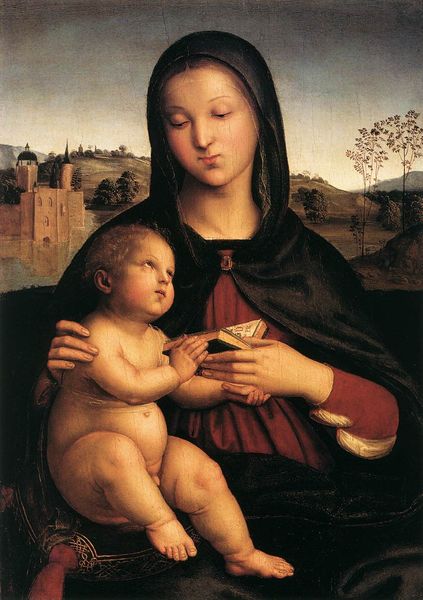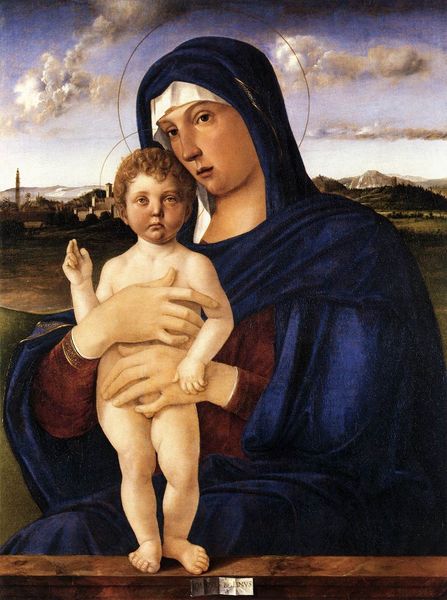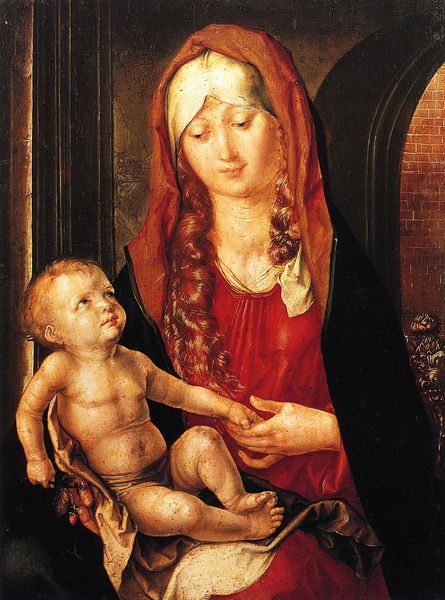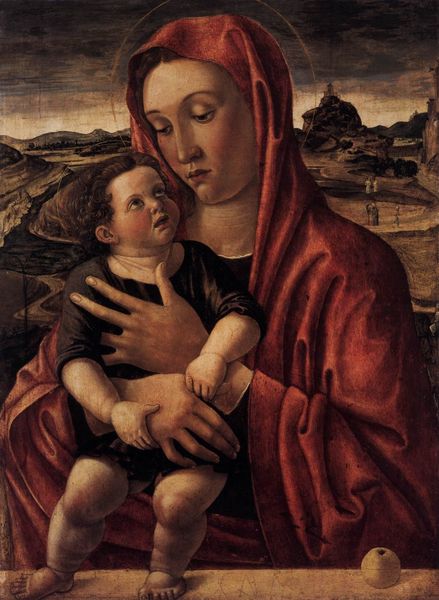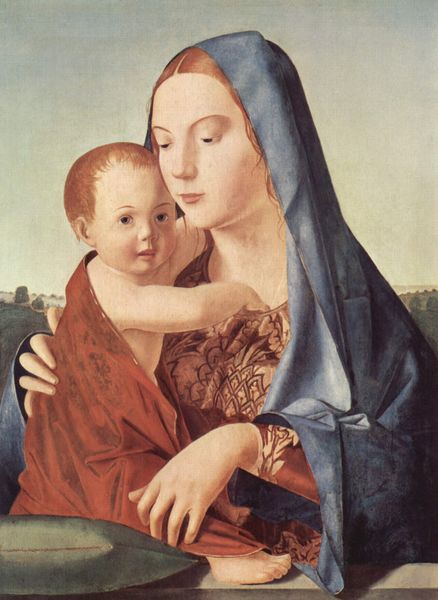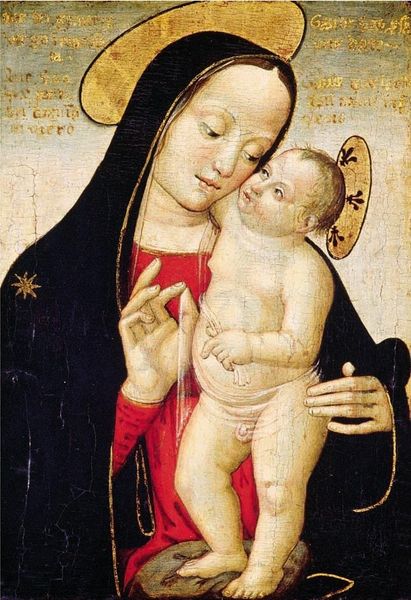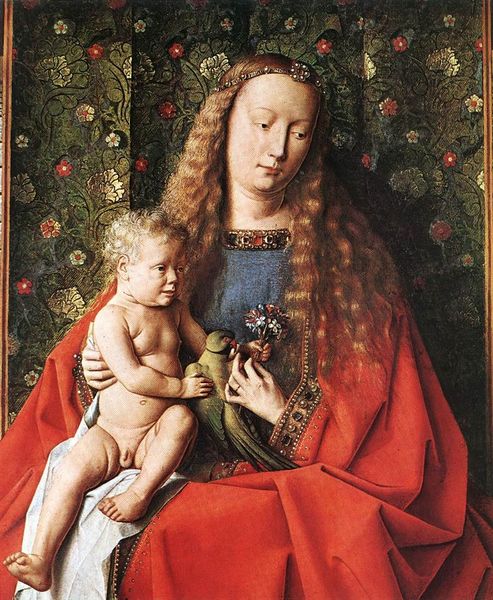
tempera, painting, oil-paint
#
portrait
#
high-renaissance
#
tempera
#
painting
#
oil-paint
#
mannerism
#
figuration
#
madonna
#
christianity
#
animal drawing portrait
#
history-painting
#
italian-renaissance
#
christ
Copyright: Public domain
Curator: Standing before us is "Maria with the sleeping child," a work attributed to Hans Baldung, dating back to around 1520. It appears to be rendered with oil and tempera. Editor: It has a strangely haunting quality. The bright red background feels almost unsettling against the serene expression on Mary's face and the vulnerability of the sleeping child. The composition, the gaze... It all makes you a bit uncomfortable, but makes you stay. Curator: Baldung's choice of materials, mixing oil and tempera, speaks to a period of experimentation, a kind of tension between traditional practices and newer techniques that transformed the artist’s labour. It seems to align with the increasing artistic individualism that also shaped consumption habits in early Renaissance Europe. Editor: From a formal perspective, observe the use of light. It's uneven, almost harsh, especially on Mary's face, accentuating the subtle planes and contours. Her gaze is direct, engaging, and challenging the viewer, all within a pyramidal structure formed by the figures of Maria and child. It adheres to Renaissance compositional ideals while subtly subverting them. Curator: Subversion, precisely. Consider Baldung's socio-economic position. As the Early Renaissance began to transform labour across the continent, painters faced very different career challenges in different regional marketplaces. A red background wouldn’t simply exist as pictorial language or devotional trope; it represented material wealth. What type of commission made a choice like that accessible for this piece? Editor: It really is the colour that stays with you. The hue feels less devotional than confrontational. Does it evoke love, or should the red function as some harbinger of Christ’s sacrifice. Curator: The tension between high art and labor is crucial here. We must remember the economic frameworks, from individual workshops and their attendant guilds all the way to consumption habits driven by the church. Editor: An insightful look into how meaning and matter converge. I focused too much, perhaps, on the aesthetic strategy. Curator: And I, maybe, on just the external forces. Together, however, maybe we’ve gotten close.
Comments
No comments
Be the first to comment and join the conversation on the ultimate creative platform.
